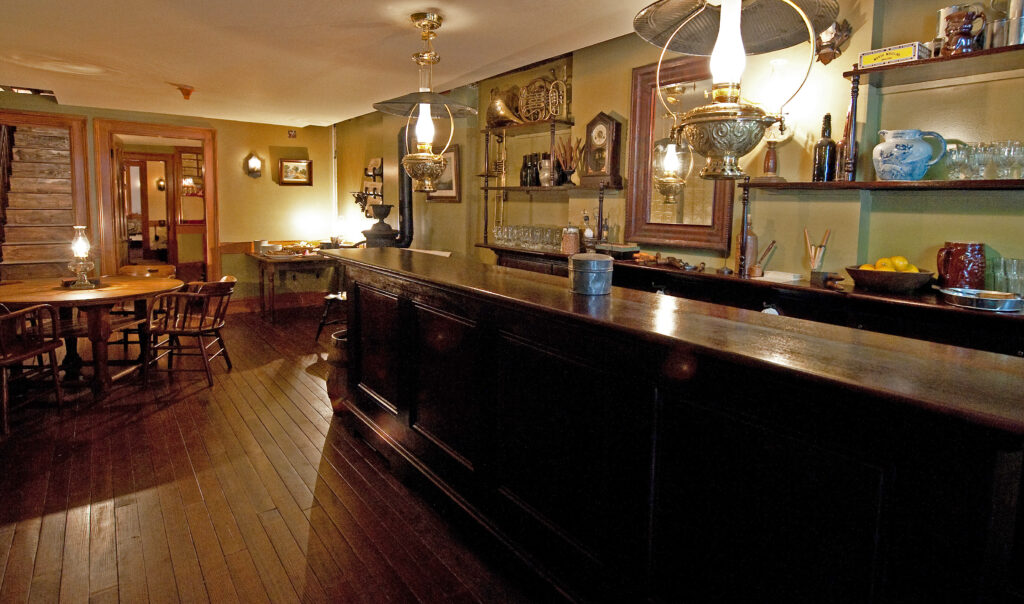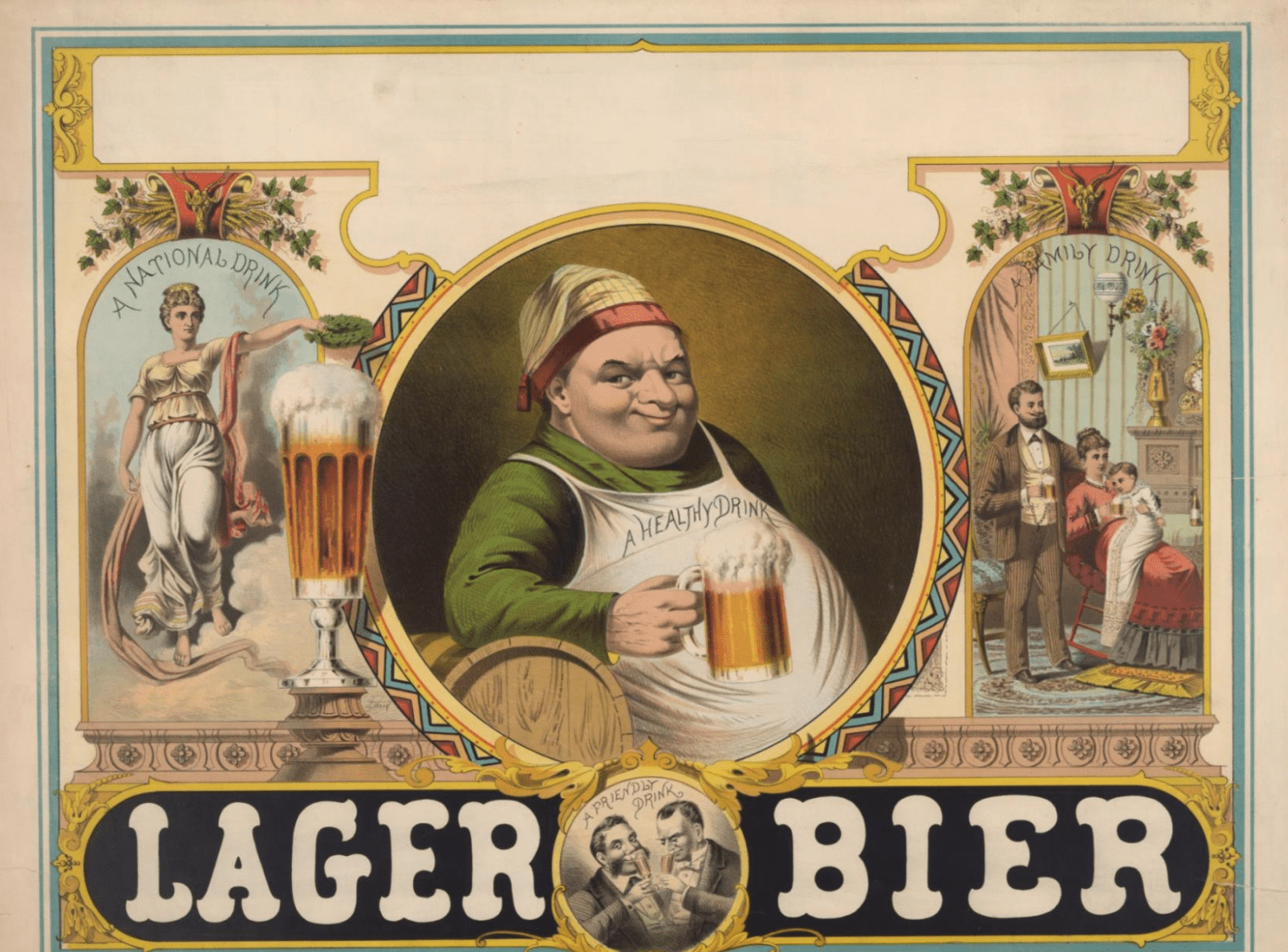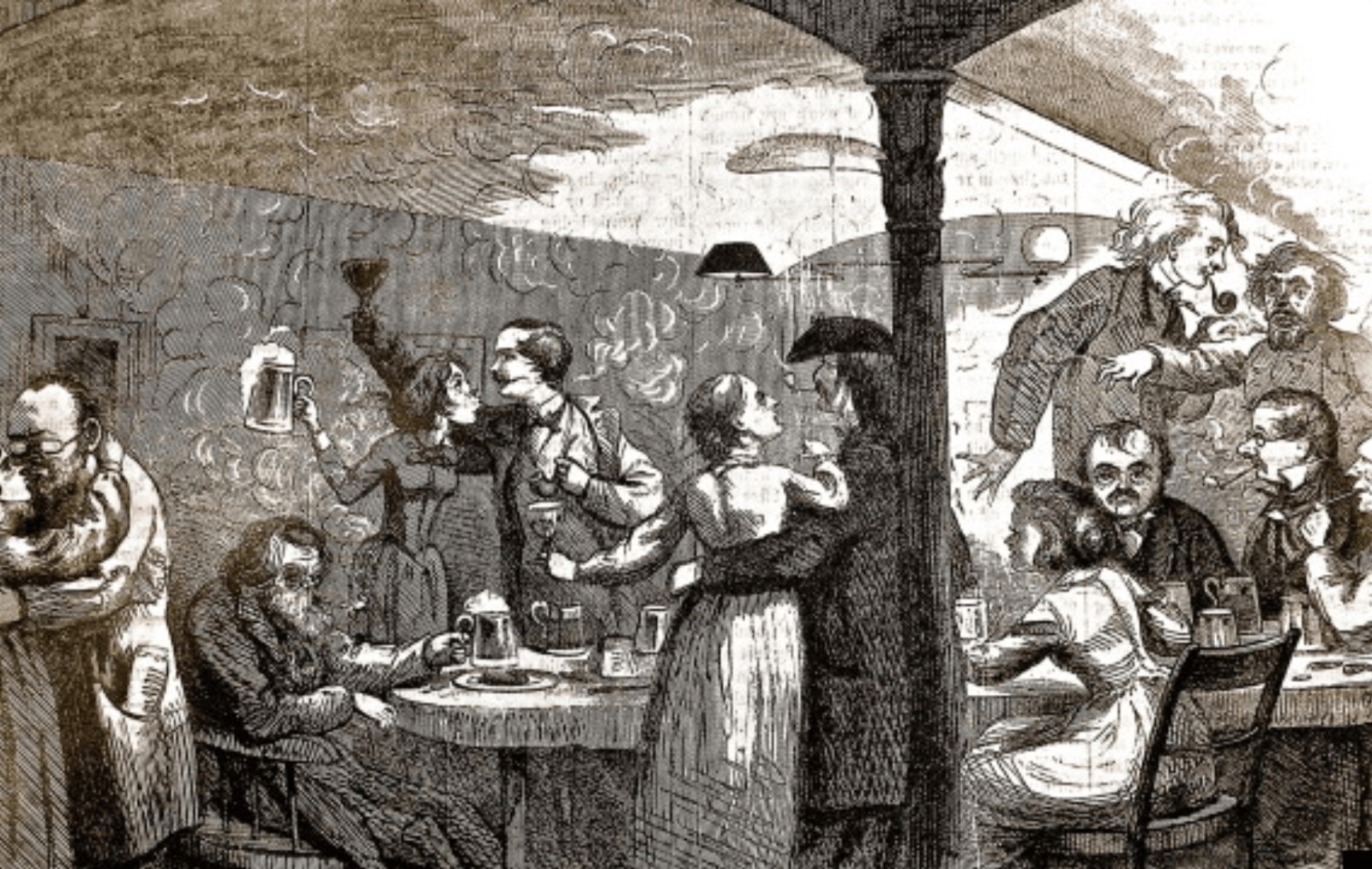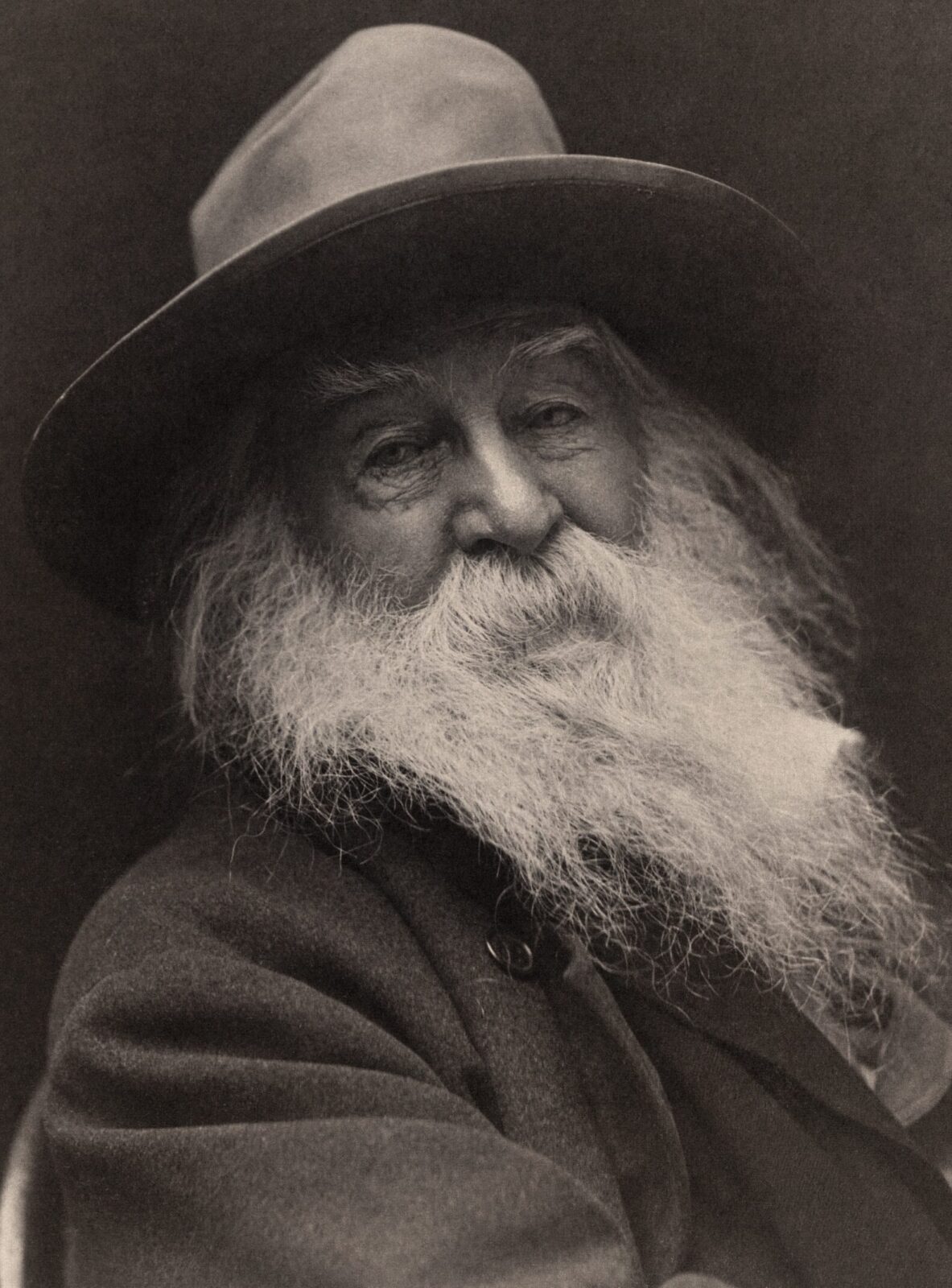This basement is crowded with people– singing along or shouting over a brass band, laughing, dancing, arguing, chasing children, crashing mugs of lager beer together and spilling the contents on the floor. We are in Schneider’s Lager Bier Saloon at 97 Orchard Street sometime in the late 19th century. Of course, at this time, the Lower East Side was filled to the brim with lager beer saloons run by German immigrants — dozens on every block along Essex, Ludlow, Forsyth, and more.
Who are we? We are residents from an apartment upstairs, laborers, artisans, mutual aid society members waiting to call a meeting, lager dealers, local politicians, Temperance Society spies. We are moochers hoping no one will notice our repeated trips to the free lunch table. We are members of the band, veterans of the Civil War, immigrants from one of the German States, close friends of John- the proprietor- or just here to get a letter notarized. This is our first time here, or we are regulars. We are here with our family or we are here alone…hoping to meet someone.
We contain multitudes.



